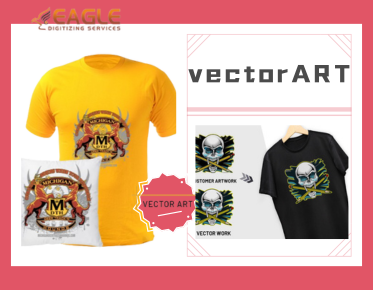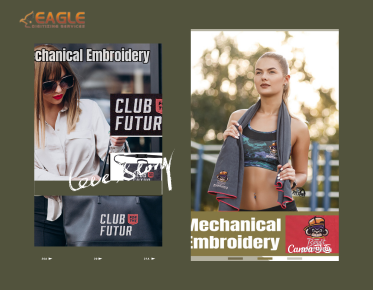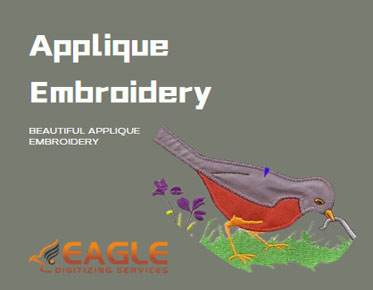How to Create Your Vector Art Portfolio?
Creating a compelling vector art portfolio is essential for any artist aiming to showcase their talent and attract potential clients. Your portfolio is more than just a collection of your best work; it's a reflection of your artistic journey, your skills, and your unique style. Let's dive into the steps to build an impressive vector art portfolio that leaves a lasting impression.
Why You Need a Vector Art Portfolio
Advantages of Showcasing Vector Artwork
Professional Presentation
A well-organized portfolio demonstrates your commitment to professionalism and attention to detail. It presents your work in a cohesive and visually appealing manner, leaving a lasting impression on viewers.
Creating a Strong First Impression
First impressions are crucial in the creative industry. A portfolio showcases your best work upfront, immediately capturing attention and illustrating your artistic style and capabilities.
Showcasing Skills and Expertise
Your portfolio is a platform to highlight your technical skills in vector art, including mastery of software tools, understanding of design principles, and proficiency in creating scalable graphics.
Establishing Credibility and Trust
A polished portfolio builds trust and credibility among potential clients and employers. It showcases your experience, reliability, and ability to deliver high-quality work consistently.
Visibility and Recognition
An online portfolio increases your visibility within the industry. It allows you to showcase your work globally, attracting a broader audience of potential clients and collaborators.
Reaching Potential Clients and Employers
A well-curated portfolio acts as a magnet for opportunities. It attracts potential clients seeking specific design styles or expertise, as well as employers looking to hire talented vector artists.
Standing Out in a Competitive Market
In a crowded marketplace, a distinctive portfolio sets you apart from competitors. It demonstrates your unique artistic voice, creativity, and ability to innovate in your field.
Building Your Personal Brand
Your portfolio serves as a platform to establish and strengthen your personal brand. Consistent presentation of your work and style helps in creating a recognizable and memorable brand identity.
Highlighting Versatility and Adaptability
A diverse portfolio showcases your ability to work across different styles, industries, and project types. It highlights your versatility and adaptability to meet varying client needs.
Flexibility Across Different Media
Vector art is versatile and suitable for various applications, from digital illustrations and logos to print media and animations. A portfolio demonstrates your capability to create artwork tailored to different mediums.
Demonstrating Technical Skills
Technical proficiency in vector art, such as precision in line work, mastery of color theory, and understanding of vectorization techniques, is effectively showcased through a portfolio.
Illustrating Creative Problem-Solving
Your portfolio tells stories of how you creatively solve design challenges. It demonstrates your ability to translate client briefs into innovative and visually compelling solutions.
Portfolio as a Career Tool
Attracting Job Opportunities
A strong portfolio attracts job offers from companies seeking talented vector artists. It serves as evidence of your skills and experience, making you a desirable candidate for creative positions.
Freelancing and Contract Work
For freelancers, a portfolio is indispensable for attracting freelance projects and contract work. It acts as a portfolio of your capabilities, convincing potential clients of your ability to deliver on their projects.
Networking and Collaboration
A portfolio facilitates networking with peers, industry professionals, and potential collaborators. It opens doors to collaborative projects, mentorship opportunities, and participation in creative communities.
Supporting Career Advancement
Regularly updating and expanding your portfolio supports career advancement. It reflects your growth as an artist, from entry-level projects to more complex and prestigious assignments.
Personal Development and Growth
A portfolio serves as a visual timeline of your artistic journey. It tracks your progress, improvement in skills, and evolution in style over time, encouraging personal development and growth.
Tracking Progress and Skill Improvement
By documenting your projects and achievements, a portfolio helps track your professional milestones and skill development. It provides motivation to continually improve and refine your craft.
Setting Goals and Objectives
Building a portfolio involves setting clear goals and objectives. Whether aiming to attract specific clients, explore new artistic styles, or enter new markets, your portfolio strategy guides your efforts.
Choosing the Right Platform
Website vs. Portfolio Platforms: Pros and Cons
Deciding where to host your portfolio is a key decision. A personal website offers complete control and customization but requires more effort to set up and maintain. Portfolio platforms like Behance and Dribbble provide built-in audiences and easy-to-use templates but may lack the personal touch of a custom website.
Popular Portfolio Platforms: Behance, Dribbble, and More
Behance and Dribbble are popular choices among artists for their ease of use and vibrant communities. Other platforms like ArtStation and Adobe Portfolio also offer excellent features tailored for creative professionals.
Building Your Own Website: Tips and Tools
If you opt for a personal website, tools like WordPress, Wix, and Squarespace can help you create a professional-looking site without extensive coding knowledge. Focus on a clean, user-friendly design that showcases your work effectively.
Selecting Your Best Work
Quality Over Quantity: Curating Your Pieces
When it comes to portfolios, less is often more. Select your best work that showcases your skills and creativity. Aim for quality over quantity to keep your portfolio focused and impressive.
Showcasing a Variety of Skills
Demonstrate your versatility by including a range of projects that highlight different skills and techniques. This could include logo design, illustrations, infographics, and more.
Organizing Your Portfolio
Creating Categories for Easy Navigation
Organize your work into categories to make navigation easy for viewers. Categories like "Logos," "Illustrations," and "Infographics" can help potential clients or employers find what they're looking for quickly.
Grouping Similar Projects Together
Grouping similar projects together can provide context and show your expertise in specific areas. For example, a series of branding projects can demonstrate your ability to create cohesive visual identities.
Highlighting Key Projects
Feature a few key projects prominently. These should be your standout pieces that make a strong impression. Include detailed case studies for these projects to provide deeper insights into your process and outcomes.
Writing Effective Project Descriptions
Crafting Engaging and Informative Descriptions
Write engaging descriptions for each project that explain the brief, your approach, and the results. Use a narrative style to make your descriptions more interesting and memorable.
Highlighting Challenges and Solutions
Discuss the challenges you faced in each project and how you overcame them. This not only demonstrates your problem-solving skills but also adds depth to your work.
Including Technical Details
Include relevant technical details such as the software and tools used. This provides insight into your technical capabilities and expertise.
High-Quality Visuals
Importance of High-Resolution Images
Ensure all images in your portfolio are high-resolution. Blurry or pixelated photographs might reduce the quality of your work.
Creating Consistent and Professional Mockups
Use consistent and professional mockups to present your work. This adds a polished, cohesive look to your portfolio and helps potential clients envision your designs in real-world applications.
Adding Personal Touches
Artist Statements: Sharing Your Story
An artist statement can add a personal touch to your portfolio. Share your artistic journey, influences, and what drives your creativity. This helps viewers connect with you on a deeper level.
Incorporating Your Personality into Your Portfolio
Let your personality shine through in your portfolio. Whether it's through your writing style, the colors you use, or the way you present your work, adding personal touches can make your portfolio more memorable.
Optimizing for User Experience
Ensuring Fast Load Times
Fast load times are crucial for keeping viewers engaged. Optimize your images and streamline your website to ensure it loads quickly.
Mobile-Friendly Design
Make sure your portfolio is mobile-friendly. With more people browsing on their phones, a responsive design ensures your portfolio looks great on any device.
SEO for Your Portfolio
Using Keywords Effectively
Optimize your portfolio for search engines by using relevant keywords in your descriptions and titles. This can help attract more visitors to your site.
Optimizing Images and Descriptions
Make sure your photographs have informative file names and alt text. This improves your SEO and ensures your portfolio is accessible to all viewers.
Promoting Your Portfolio
Utilizing Social Media: Instagram, LinkedIn, and More
Promote your portfolio on social media platforms like Instagram and LinkedIn. Share your work, connect with other artists, and engage with potential clients.
Networking and Collaborations
Networking is key to expanding your reach. Collaborate with other artists, participate in online forums, and attend industry events to build your professional network.
Keeping Your Portfolio Updated
Regularly Adding New Work
Maintain a fresh portfolio by constantly adding new work. This shows that you are active and continuously improving your skills.
Revising and Refreshing Old Projects
Don't be afraid to revisit and update older projects. This can provide a fresh perspective and demonstrate your growth as an artist.
Seeking Feedback
Asking for Constructive Criticism
Seek feedback from peers, mentors, and clients. Constructive criticism can help you identify areas for improvement and fine-tune your portfolio.
Making Improvements Based on Feedback
Use the feedback you receive to make meaningful improvements. This continuous iteration will help you maintain a high-quality portfolio.
Analyzing Successful Portfolios
What Top Artists Are Doing Right
Study portfolios from top artists to understand what makes them successful. Look for common elements such as strong visuals, clear organization, and engaging descriptions.
Incorporating Best Practices
Incorporate best practices from successful portfolios into your own. This can help you elevate your portfolio and attract more attention.
Advanced Tips for Standout Portfolios
Interactive Elements: Adding Animations and Videos
Add interactive elements like animations and videos to make your portfolio more dynamic and engaging. This can help you stand out and showcase your work in a unique way.
Creating a Cohesive Visual Theme
A cohesive visual theme ties your portfolio together and enhances its overall aesthetic. Consistent colors, fonts, and layout create a professional and polished look.
Showcasing Client Work
Highlighting Client Testimonials and Reviews
Include client testimonials and reviews to build credibility. Positive feedback from clients can help reassure potential clients of your skills and professionalism.
Displaying Before and After Comparisons
Before and after comparisons can demonstrate your impact and the value you bring to projects. This visual proof of your abilities can be very persuasive.
Legal Considerations
Understanding Copyright and Usage Rights
Ensure you understand copyright and usage rights for all the work in your portfolio. This protects you legally and ensures you respect the rights of others.
Including Proper Credits and Licenses
Always credit collaborators and include proper licenses for any assets used. This demonstrates professionalism and respect for the creative community. Your portfolio should be a live document that changes as you progress in your profession. Keep refining and updating it to reflect your latest and best work. Eagle Digitizing offers vector graphics conversion services. Creating a standout vector art portfolio is a journey. Keep experimenting, learning, and sharing your work with the world. Your dedication will pay off, opening doors to new opportunities and creative growth.



